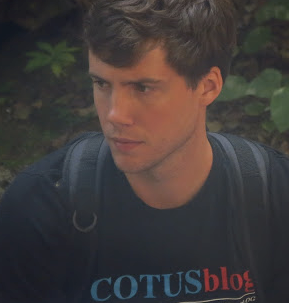Friday round-up

on Feb 26, 2016 at 4:33 pm
Today the Justices met for their first Conference since January 22. Daniel Fisher of Forbes discusses one case the Justices considered today, a challenge by a collection of counties, farmers, and businesses to an Environmental Protection Agency “plan that would remove hundreds of thousands of acres of farmland from production in regions surrounding the Chesapeake Bay.” The editorial board of The Washington Times urges the Justices to review the case, arguing that the lower court decision will “enable the EPA to redefine statutory law as it pleases, increasing its own unchallenged power and authority.” Myron Ebell at Competitive Enterprise Institute characterizes the case as “in the interests of anyone who cares about affordable housing and anyone who opposes the continuing federalization of land-use controls.”
Yesterday the Court announced that Justice Clarence Thomas will serve as the Circuit Justice for the Fifth Circuit, an assignment formerly held by the late Justice Antonin Scalia. Lyle Denniston covered the story for this blog, with additional coverage coming from Tony Mauro of The National Law Journal (subscription or registration required).
Next week on Monday the Justices will hear oral arguments in Williams v. Pennsylvania, a dispute involving judicial recusal from capital cases. Richard Re previews the case for this blog, while at ACSblog Bruce Green urges the Court to “send a clear message of disapproval and order that Mr. Williams receive the fair and impartial hearing in the state high court that he deserves.” On Wednesday the Justices hear oral arguments in Whole Woman’s Health v. Hellerstedt, a challenge to Texas abortion regulations. Lyle Denniston previews the case for this blog, with other coverage coming from Louise Radnofsky and Jess Bravin at The Wall Street Journal and Brian Rosenthal at Houston Chronicle.
Matthew Yglesias at Vox discusses “obvious partisan political angles” to the Obama administration’s consideration of Governor Brian Sandoval of Nevada to fill the vacancy left by the death of Justice Scalia, with additional commentary at Medium from Nathaniel Haas. Tony Mauro of The National Law Journal (subscription or registration required) subsequently reports that Sandoval has removed himself from consideration.
At The Economist, Steven Mazie provides an explainer on the Supreme Court nominations process. Alica Uribe of Vox presents research suggesting that “[g]iven the current atmosphere in which President Obama is choosing a possible successor for Scalia, it is very likely, particularly given his disagreement with the leadership in the Senate, that we will see him choosing from within the federal judiciary.” In The New Yorker, Lincoln Caplan argues that “[w]hat Republicans now insist is a principled reason not to consider the nominee is more likely to look like what this year’s Presidential primary voters are reacting against so vehemently: political dysfunction.” At his Election Law Blog, Rick Hasen suggests that “[f]or the current vacancy, I expect the best predictor of how far the nominee will get depends upon polling among endangered Republican Senators up for reelection.”
Briefly:
- This blog features an interview between Fabrizio di Piazza and Richard Hasen on understanding the Supreme Court, especially through election law and the problem of money in politics (also available on GOVERNINGWorks).
- Kimberly Robinson of Bloomberg BNA suggests that Justice Elena Kagan’s experience as a Supreme Court clerk, during which a seat sat vacant for eight months before being filled by Justice Anthony Kennedy, may give her “unique insight into how the court can go forward with a thin bench.”
- At ACSblog, Laurence Tribe and Joshua Matz contend that, because “a Justice’s influence on the Court can take many forms, not all of them reducible to vote tallies,” “to better understand what issues lurk on the horizon forany new Justice, it is helpful to see where Scalia stuck to familiar left-right scripts and where he tossed those scripts aside.”
- At Hamilton and Griffin on Rights Leslie Shoebotham suggests that “Justice Breyer’s view will be the pivot point in determining whether the Court reaches a 4-4 decision or, instead, a win for the State of Utah” in Utah v. Strieff, the exclusionary rule case in which the Court heard oral aruments on Monday.


